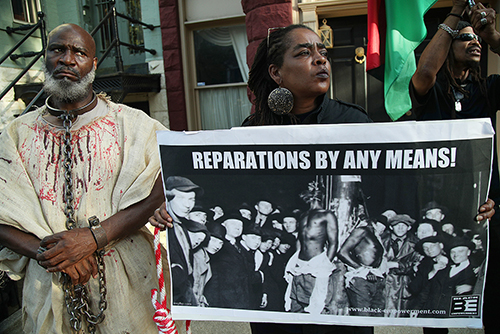The push for a bill that would drive research into reparations for Black Americans
Share
Explore Our Galleries
Breaking News!
Today's news and culture by Black and other reporters in the Black and mainstream media.
Ways to Support ABHM?
by Juana Summers and Ashley Brown, NPR

NPR’s Juana Summers talks with Democratic New York Congressman Jamaal Bowman about the effort to reintroduce H.R. 40, a bill that would create a task force to study reparations for Black Americans.
JUANA SUMMERS, HOST:
Twenty years ago, the late Democratic Congressman John Conyers of Michigan posed this question to a crowd of thousands.
JOHN CONYERS: Reparations, not in the next century, not in 2185, not 10 years from now. But reparations when? Reparations when?
SUMMERS: He was the original sponsor of H.R.40, a bill that would create a task force to study reparations for Black Americans, a bill named after the storied and ultimately unfulfilled reconstruction era promise of 40 acres of land for formerly enslaved people. That rallying cry from Conyers came on the grounds of the U.S. Capitol. Some of that building’s most recognizable architecture is one of many still visible legacies of slave labor. And in its halls, the debate has continued over what reparations should look like or whether they should exist at all…
Enjoy the complete conversation here.
For more Breaking News click here.
For more ABHM galleries click here.











Comments Are Welcome
Note: We moderate submissions in order to create a space for meaningful dialogue, a space where museum visitors – adults and youth –– can exchange informed, thoughtful, and relevant comments that add value to our exhibits.
Racial slurs, personal attacks, obscenity, profanity, and SHOUTING do not meet the above standard. Such comments are posted in the exhibit Hateful Speech. Commercial promotions, impersonations, and incoherent comments likewise fail to meet our goals, so will not be posted. Submissions longer than 120 words will be shortened.
See our full Comments Policy here.